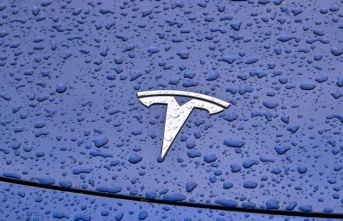Prices are rising, there are tough months ahead of us. Heating is becoming significantly more expensive thanks to the enormous increase in gas prices. A consequence of the Russian war of aggression in Ukraine and reduced gas supplies from Russia. As a result, electricity prices are also rising.
Recipients of green electricity may feel safe from rising electricity bills. After all, there is no natural gas in green electricity, only energy from wind, sun, water or biomass.
But even those who use green electricity at home must be prepared for price increases.
There are various reasons for this. One of them is the electricity market, as the Ebersberg-Munich energy agency explains. Because the prices for the electricity deliveries arise on the electricity exchanges, for example the Leipzig electricity exchange EEX. Power plant operators or wholesalers meet the electricity suppliers or industrial companies here, i.e. the demanders.
The providers E.ON and EnBW also trade on electricity exchanges. "Various market factors such as procurement costs or supply and demand determine the prices for electricity on the exchanges. Since electricity from coal and gas is more expensive in the current situation, the demand and thus also the price for green electricity are increasing. Rising market prices therefore always have an effect Green electricity tariffs. That is currently the case, "a spokesman for EnBW told the star.
However, the design of the electricity market also plays a role, as a spokesman for the electricity company E.ON reported when asked by stern. The coverage of the offer and the design of the electricity price are based on the so-called merit order. "In short, this stipulates that the price of the most expensive type of production is charged for electricity," said the E.ON spokesman.
In practice, this means that "in the order in which they are offered, power plants are added from cheap to expensive until all consumers can cover their electricity purchases," writes the Ebersberg-Munich energy agency.
Renewable energies come first in this order, then nuclear power plants, then lignite power plants, followed by hard coal power plants, gas and steam power plants and finally gas turbine power plants. "The electricity price for all providers is based on the most expensive offer from the provider that contributes to the fulfillment of the required amount of electricity." The price of electricity therefore depends on the most expensive power plant that is still needed to cover the demand for electricity. And these are the gas power plants at the moment.
So if the gas price increases worldwide, electricity costs in Germany will also increase – even with green electricity.
According to the Energy Agency Ebersberg-Munich, regional green electricity is also affected by the price fluctuations. Because such direct supply contracts - the so-called over the counter or OTC contracts - are also based on electricity exchange prices, as it is the benchmark for standard market price levels.
The problem: If green electricity providers sell their electricity above the market price, they would not be competitive. However, if the green electricity provider wants to pay lower prices, the operators of wind turbines and the like would switch to customers who buy at the exchange price – or go directly to the electricity price exchange. Therefore, direct and even regional supply contracts for green electricity are also influenced by the exchange price.
But by how much is green electricity more expensive? Forecasting the development of the costs for green electricity is difficult due to current developments, according to EnBW.
The reduced volume of gas from Russia further increased the momentum on the energy markets. This and other external factors make it difficult to forecast price developments.
Green electricity remains the more sustainable alternative. "Unfortunately, there is no price advantage associated with this."







